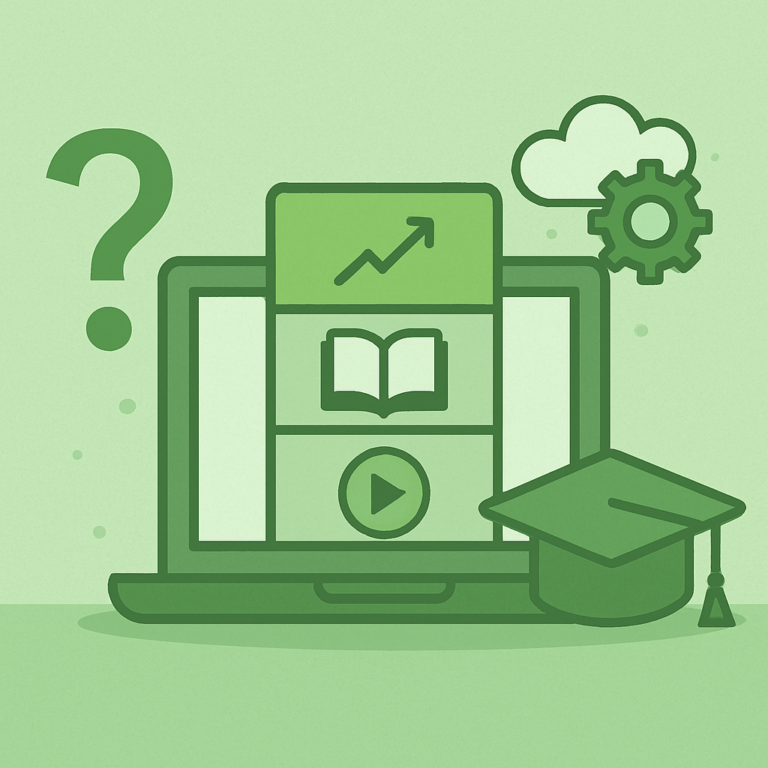In the ever-evolving landscape of business, predicting sales accurately is crucial for strategic planning and decision-making. Sales prediction using machine learning (ML) is a cutting-edge approach that can significantly enhance the accuracy and efficiency of sales forecasts. This guide, brought to you by Acadle, aims to provide beginners with a comprehensive understanding of how to leverage machine learning for sales prediction.
What is Sales Prediction?
Sales prediction is the process of estimating future sales revenue over a specific period. Accurate sales predictions help businesses manage inventory, plan marketing strategies, allocate resources, and set realistic sales targets. Traditionally, sales forecasting relied on historical data and statistical methods. However, with the advent of machine learning, sales prediction has become more sophisticated and precise.
Why Use Machine Learning for Sales Prediction?
Machine learning can analyze vast amounts of data and identify patterns that traditional methods might miss. By using algorithms that learn from data, machine learning models can make more accurate predictions. Here are some benefits of using machine learning for sales prediction:
Accuracy: Machine learning models can handle complex and non-linear relationships in data, leading to more accurate predictions.
Automation: Once trained, machine learning models can automate the prediction process, saving time and reducing human error.
Scalability: Machine learning models can be scaled to handle large datasets, making them suitable for businesses of all sizes.
Key Concepts in Machine Learning for Sales Prediction
Before diving into the process of sales prediction using machine learning, it’s essential to understand some key concepts.
- Data Preprocessing
Data preprocessing involves cleaning and preparing data for analysis. This step is crucial as the quality of data directly impacts the performance of the machine learning model. Data preprocessing includes handling missing values, encoding categorical variables, and normalizing numerical data.
- Feature Selection
Feature selection is the process of identifying the most relevant variables that influence sales. These features could include historical sales data, marketing spending, economic indicators, seasonality, and more. Selecting the right features improves model accuracy and reduces computational complexity.
- Model Training
Model training involves feeding the machine learning algorithm with historical data to learn patterns and relationships. Various algorithms can be used for sales prediction, including linear regression, decision trees, and neural networks. The choice of algorithm depends on the nature of the data and the specific requirements of the prediction task.
- Model Evaluation
Model evaluation assesses the performance of the trained model using metrics such as mean absolute error (MAE), mean squared error (MSE), and R-squared. A good model should generalize well to unseen data and provide accurate predictions.
Steps to Build a Sales Prediction Model Using Machine Learning
Step 1: Define the Problem
The first step in building a sales prediction model is to define the problem clearly. This includes specifying the prediction goal (e.g., predicting monthly sales) and identifying the time horizon for the forecast (e.g., next quarter, next year).
Step 2: Collect and Prepare Data
Collecting relevant data is crucial for building an accurate prediction model. Data sources can include historical sales records, marketing data, economic indicators, and more. Once collected, the data must be cleaned and preprocessed to ensure it is suitable for analysis.
Step 3: Select Features
Identify the features that are most likely to influence sales. This can involve domain knowledge, statistical analysis, and feature engineering. Features might include past sales figures, advertising spend, seasonal factors, and macroeconomic indicators.
Step 4: Choose a Machine Learning Algorithm
Select an appropriate machine learning algorithm for the prediction task. Common algorithms for sales prediction include:
Linear Regression: Suitable for simple linear relationships between features and sales.
Decision Trees: Capable of handling non-linear relationships and interactions between features.
Random Forest: An ensemble method that improves accuracy by combining multiple decision trees.
Neural Networks: Suitable for complex, non-linear relationships in large datasets.
Step 5: Train the Model
Train the selected algorithm using historical data. This involves splitting the data into training and testing sets, fitting the model to the training data, and tuning hyper parameters to optimize performance.
Step 6: Evaluate the Model
Evaluate the trained model using the testing set and appropriate metrics. Adjust the model as needed based on the evaluation results to improve accuracy.
Step 7: Deploy and Monitor the Model
Once satisfied with the model’s performance, deploy it in a real-world setting to start making sales predictions. Continuously monitor the model’s performance and retrain it periodically with new data to maintain accuracy.

Practical Example: Predicting Monthly Sales with Linear Regression
To illustrate the process of sales prediction using machine learning, let’s walk through a practical example using linear regression to predict monthly sales.
Step 1: Define the Problem
Our goal is to predict monthly sales for the next year based on historical sales data.
Step 2: Collect and Prepare Data
Assume we have collected two years of monthly sales data. The data is cleaned and preprocessed to handle missing values and normalize numerical features.
Step 3: Select Features
For simplicity, we’ll use past sales data and month of the year as features. Additional features like marketing spend and economic indicators can be included for more complex models.
Step 4: Choose a Machine Learning Algorithm
We’ll use linear regression for this example due to its simplicity and effectiveness for time series data.
Step 5: Train the Model
The data is split into training and testing sets. The linear regression model is trained on the training data to learn the relationship between the features and sales.
Step 6: Evaluate the Model
The model’s performance is evaluated using the testing set. Metrics such as MAE and R-squared are used to assess accuracy. If the model’s performance is satisfactory, we proceed to deployment.
Step 7: Deploy and Monitor the Model
The trained model is deployed to predict monthly sales for the next year. The model is monitored and retrained periodically with new data to ensure continued accuracy.
Challenges and Considerations in Sales Prediction Using Machine Learning
While machine learning offers significant advantages for sales prediction, there are several challenges and considerations to keep in mind.
- Data Quality
The accuracy of sales predictions heavily depends on the quality of the data. Incomplete, inconsistent, or biased data can lead to inaccurate predictions. Ensuring data quality through rigorous preprocessing is essential.
- Model Complexity
Choosing the right level of model complexity is crucial. Overly complex models can lead to overfitting, where the model performs well on training data but poorly on new data. Simpler models might underfit, failing to capture important patterns. Balancing model complexity is key.
- Feature Engineering
Effective feature engineering can significantly improve model performance. This involves creating new features or transforming existing ones to better capture the underlying patterns in the data.
- Interpretability
While complex models like neural networks can provide highly accurate predictions, they can be challenging to interpret. For business decision-making, it might be important to use models that provide insights into how different features influence sales.
- Continuous Learning
The business environment is dynamic, and factors influencing sales can change over time. Continuous learning involves regularly updating the model with new data to maintain accuracy.
Tools and Technologies for Sales Prediction Using Machine Learning
Several tools and technologies can aid in building and deploying machine learning models for sales prediction. Here are a few popular ones:
- Python and R
Python and R are widely used programming languages for machine learning due to their extensive libraries and frameworks such as scikit-learn, TensorFlow, and Keras.
- Data Visualization Tools
Tools like Tableau, Power BI, and Matplotlib can help visualize sales data and prediction results, making it easier to interpret and communicate insights.
- Cloud Platforms
Cloud platforms like AWS, Google Cloud, and Azure offer scalable infrastructure and services for building, training, and deploying machine learning models.
Machine Learning Frameworks
Frameworks such as scikit-learn, TensorFlow, Keras, and PyTorch provide pre-built functions and tools to streamline the development of machine learning models.
Conclusion
Sales prediction using machine learning is a powerful way for businesses to improve sales forecasting. By applying advanced algorithms and data analysis, companies can achieve more accurate predictions, leading to better decisions and strategies.
For beginners, it’s important to grasp the basics of building a sales prediction model. Key steps include data preprocessing, feature selection, model training, and evaluation, all essential for a successful prediction model.”
Acadle is committed to helping you navigate this journey with ease. By following this guide, you can start harnessing the power of machine learning to enhance your sales forecasting capabilities and drive business success
“Claim your free Acadle LMS System demo now and watch your team’s learning and performance soar!”



